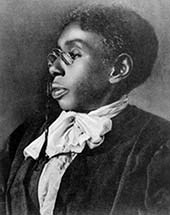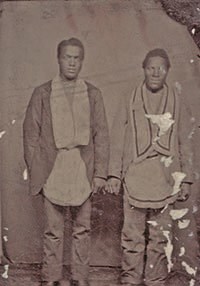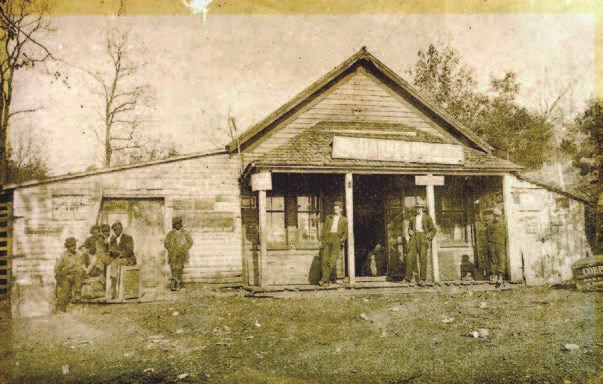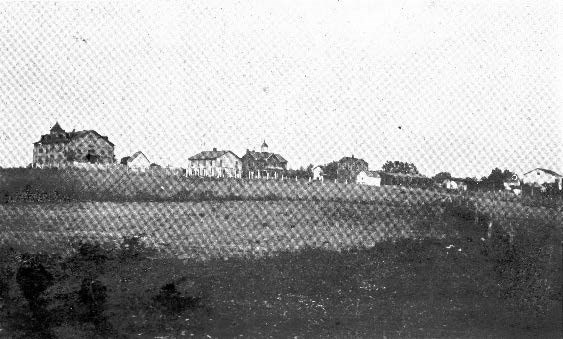Last updated: August 8, 2023
Article
Incredible Untold Stories of Everyday Life
The African American Experience in Rural Maryland, Virginia, and eastern West Virginia, 1865-1900

Manassas Museum System, Manassas, Virginia
In the Reconstruction period following the Civil War, newly freed African Americans faced monumental challenges to establish their own households, farm their own lands, establish community institutions and churches, and to pursue equal justice under the law in a period of racist violence. While the lives of African Americans in urban areas during this time period have been well studied, much less time has been focused on the experience of rural African Americans.
In a new NPS report, "They Have Erected a Neat Little Church," The Rural African American Experience, 1865–1900, in the National Capital Area historian Edith Wallace presents the story of the extraordinary accomplishments of rural African Americans to build seemingly ordinary lives so soon after the Civil War and emancipation. This Special History Study includes case studies of the experiences of African Americans on and near lands that became Manassas National Battlefield Park (VA), Antietam National Battlefield (MD), and Prince William Forest Park (VA).
Community Case Studies:
- Batestown and Hickory Ridge, Virginia, near and within today’s Prince William Forest Park
- Liberty Street, Manassas, Virginia, near Manassas National Battlefield Park
- Sharpsburg, Maryland, near Antietam National Battlefield
- Red Hill, Maryland, near Antietam National Battlefield
View the Report
“They Have Erected a Neat Little Church:" A Special History Study of the Rural African American Experience, 1865–1900, in the National Capital Area

Sharpsburg Museum of History
These case studies provide a treasure trove of primary source information about who lived in these communities and the institutions they built. The report also includes related tables of household-level census records (Appendix D) describing the names and ages of families and other residents, and their occupations, literacy levels, and property ownership. Historic maps and photographs, lists of communities and Odd Fellows halls, and many photographs of buildings that survive today are also included.
These sources and their historical context can be a valuable starting point for deeper dives into individual biographies, family histories, and even potential genealogies for descendant communities. The next step for researchers and interpreters is to bring individual stories to life out of these broader community histories.The NPS report describes how, faced with the disillusionment of the Reconstruction years, the segregation and hostilities of the Jim Crow era, and the hardships of the Depression, rural African Americans turned to family, church, and community to survive. Many found employment as laborers on neighboring farms, some turned to sharecropping, and a very few owned land.

NPS, Prince William Forest Park
Others worked in major industries of the region, held jobs in the towns, and as servants in white homes. Individual people profiled include:
- Hillary Watson of Sharpsburg, MD who remained a farm laborer his entire life,
- James Robinson of Manassas, VA who owned land and had a relatively prosperous farm
- Jennie Dean, who attended a Freedmen’s Bureau school in Manassas, VA and founded thriving churches and later established the Manassas Industrial School.
About the Report:
“They Have Erected a Neat Little Church:" Special History Study of Rural African American Experience, 1865-1900, in the National Capital Area by Edith B. Wallace. Produced by National Park Service and the Organization of American Historians.

Hathi Trust Digital Library
Tags
- antietam national battlefield
- catoctin mountain park
- chesapeake & ohio canal national historical park
- george washington memorial parkway
- harpers ferry national historical park
- manassas national battlefield park
- monocacy national battlefield
- national capital parks-east
- national mall and memorial parks
- prince william forest park
- rock creek park
- african american
- african american history
- agriculture
- benevolent societies
- black
- black history
- churches
- citizenship
- civic engagement
- civil war
- education
- emancipation
- enslavement
- farming
- historic resource study
- history
- households
- iron works
- justice
- lynching
- mining
- mutual aid
- reconstruction
- reconstruction era
- religion
- rural communities
- schools
- segregation
- slavery
- violence
- voting
- african american heritage
- african americans
- ncr
